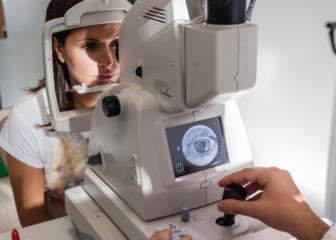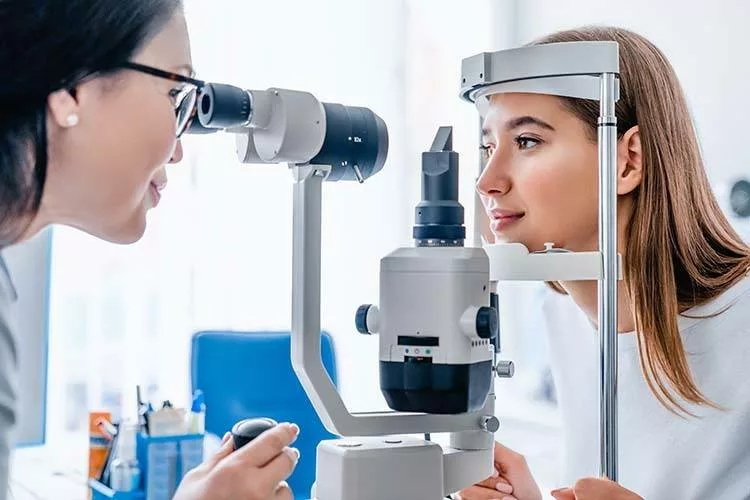Discover a Trusted Optometrist Chino for Family Eye Care Solutions
Discover a Trusted Optometrist Chino for Family Eye Care Solutions
Blog Article
Exploring the most up to date Technical Improvements in Optometry and What They Mean for Optometrists
In the ever-evolving field of optometry, recent technological advancements are improving just how experts approach eye treatment. From the precision of Optical Coherence Tomography to the nuanced understandings offered by AI-driven diagnostic tools, these technologies are establishing new standards in person analysis and therapy. Teleoptometry is positioned to redefine ease of access, guaranteeing that expertise transcends geographical restrictions. As these innovations permeate the technique, eye doctors are confronted with the obstacle of accepting these devices to improve client end results. Yet, the question remains: exactly how will these technological changes redefine the functions and responsibilities within the profession?
Technologies in Diagnostic Equipment
Advancing the field of optometry, advancements in diagnostic devices have actually reinvented the way eye care specialists evaluate and detect visual disabilities and ocular conditions. The past decade has actually witnessed significant technical advancements, enabling more accurate and thorough analyses.
One more trick technology is the introduction of sophisticated corneal topography systems, which map the surface area curvature of the cornea with accuracy. These tools are especially valuable for fitting contact lenses and detecting corneal problems. Moreover, electronic retinal imaging has actually changed typical ophthalmoscopy, offering detailed, breathtaking views of the retina that assist in detailed aesthetic exams.
The growth of wavefront aberrometry has also been crucial, allowing the evaluation of refractive errors with unequaled accuracy (Optometrist Chino). This modern technology helps in customizing rehabilitative lenses and enhancing surgical results for refractive surgical procedures. Jointly, these analysis developments encourage eye doctors to deliver remarkable individual care, guaranteeing early treatment and customized therapy approaches, eventually boosting aesthetic wellness results
AI in Individual Administration
Building on the foundation of cutting-edge analysis devices, the unification of artificial intelligence (AI) in patient administration represents a transformative jump for optometry. AI systems are significantly utilized to boost efficiency, accuracy, and customization in individual treatment.
In addition, AI-driven systems facilitate streamlined patient communications and administrative procedures. Automated organizing, virtual consultations, and personalized follow-up plans not only enhance patient fulfillment however likewise optimize time monitoring for experts. These systems can triage clients based on the urgency of their conditions, ensuring that those in important need receive timely focus.
Additionally, AI enhances decision-making by supplying optometrists with evidence-based referrals and treatment pathways. By integrating information from electronic health records, AI devices provide insights that notify clinical choices, minimizing the danger of mistakes and enhancing patient results. As AI continues to progress, its function in person monitoring will likely expand, reshaping the landscape of optometric care.
Advances in Retinal Imaging
In the realm of optometry, retinal imaging has seen exceptional technical developments that are boosting diagnostic capabilities and patient treatment. Advancements such as Optical Coherence Tomography (OCT) and fundus digital photography have reinvented just how eye doctors imagine and analyze the retina. OCT, particularly, provides high-resolution, cross-sectional pictures of the retina, enabling for the thorough evaluation of its layers. This capability is vital for early discovery and administration of problems like glaucoma, diabetic person retinopathy, and age-related macular deterioration.
Boosted imaging techniques like OCT angiography are more refining analysis accuracy. This non-invasive method maps blood flow in the retina, using important insights into vascular health and wellness without the requirement for dye shots. Furthermore, adaptive optics innovation is being integrated right into retinal imaging systems to deal with eye aberrations, providing unmatched image clarity. Such improvements assist in the identification of minute retinal modifications that might represent condition progression.
Furthermore, improvements in synthetic knowledge are augmenting retinal imaging by making it possible for computerized analysis of huge datasets. These systems help eye doctors in recognizing patterns a measure of pathology, consequently enhancing analysis accuracy and performance. Collectively, these technologies are changing retinal official source imaging right into a keystone of contemporary eye treatment, enhancing end results and increasing healing possibilities.
Teleoptometry's Growing Function
Teleoptometry is increasingly ending up being a crucial component of eye care, driven by improvements in digital communication and diagnostic devices. This is specifically helpful in country and underserved areas where accessibility to specialized eye treatment is frequently restricted.
The combination of expert system (AI) more improves teleoptometry, allowing the analysis of aesthetic data and helping in the discovery of ocular problems such as glaucoma and diabetic person retinopathy. AI-powered formulas can swiftly translate complex imaging information, supplying eye doctors with useful understandings that reinforce clinical decision-making.
In addition, teleoptometry supports connection of care with smooth combination with digital health documents (EHRs), allowing optometrists to keep comprehensive person histories. When seeking advice from with different professionals., this makes certain that clients get regular and customized care even.
In spite of these benefits, obstacles continue to be, including guaranteeing data protection and managing patient expectations. Nonetheless, teleoptometry stands for a substantial stride in the direction of more accessible, efficient, and patient-centered eye care. As modern technology advances, its function is poised to broaden better.

Future Patterns in Eye Care
A myriad of innovative trends is readied to improve the future of eye treatment, driven by technological improvements and the progressing requirements of clients. One significant fad is the assimilation of man-made intelligence (AI) in diagnostics, which promises to enhance the accuracy and effectiveness of eye evaluations. AI algorithms can analyze substantial quantities of data from retinal photos, possibly discovering conditions like diabetic person retinopathy and glaucoma earlier than standard methods.
Moreover, tailored medicine is gaining grip in optometry, with genetic screening notifying customized therapy plans. This approach intends to optimize person results by tailoring treatments to private hereditary profiles. Wearable modern technology, such as wise contact lenses, is likewise coming up, supplying real-time surveillance of intraocular pressure or sugar levels, hence giving continuous insights right into eye and systemic health.
The fostering of augmented fact (AR) and digital truth (VR) in training and individual education is one more emerging fad. These technologies supply immersive experiences that can boost understanding and abilities both for individuals and eye doctors. As these patterns evolve, optometrists have to stay abreast of technological improvements to give advanced care, ensuring enhanced individual end results and fulfillment in the dynamic landscape of eye treatment.
Conclusion

Jointly, these diagnostic improvements equip optometrists to supply remarkable individual care, guaranteeing very early intervention and customized therapy methods, ultimately boosting visual wellness outcomes.

As these modern technologies proceed to develop, optometrists have to adjust and incorporate them into published here method, inevitably optimizing workflow effectiveness and raising the criterion of eye treatment delivered to patients.
Report this page